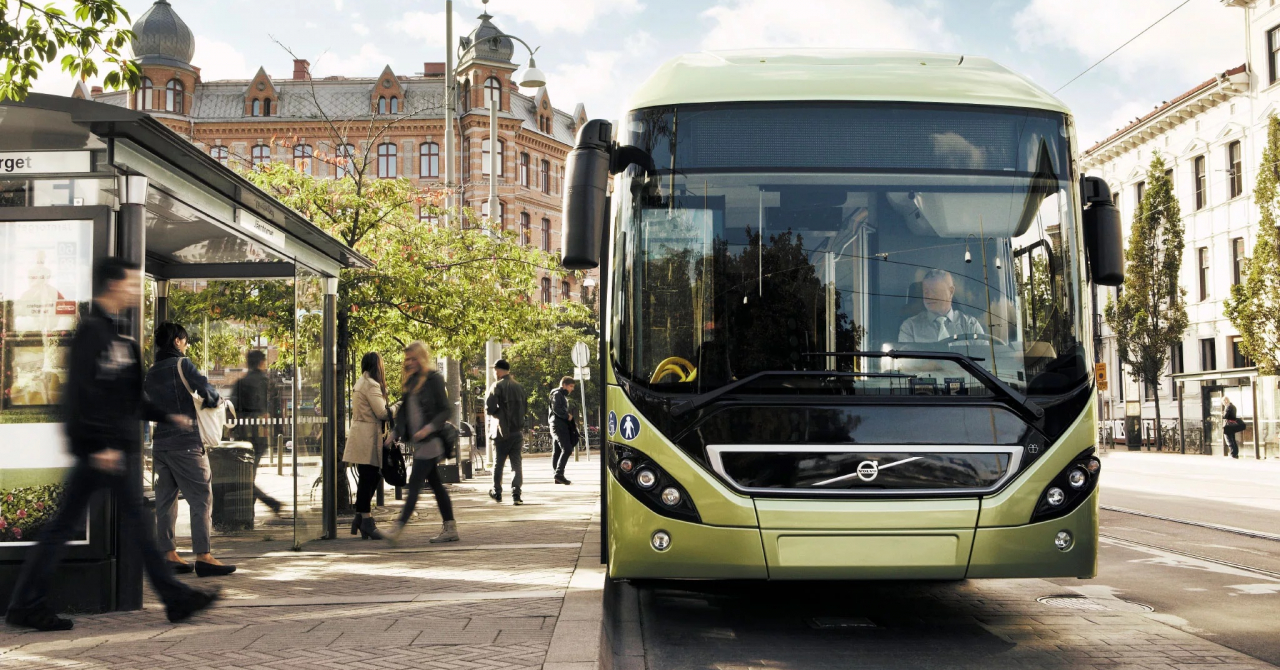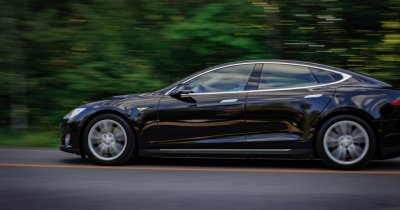However, these buses aren't easy to build nor cheap to purchase, especially in large volumes, so until we will be able to only use hydrogen and battery-powered buses, we'll need to find a compromise.
For now, that seems to be coming in the form of hybrid buses, which aim to be sort of a bridge between conventional diesel buses and hydrogen or battery-powered ones.
What is a hybrid bus and how does it work
Similar to a car, a hybrid bus uses both a traditional fossil-fuel engine and an electric motor in order to maximize efficiency and reduce fuel consumption and, thus, the emissions that it releases into the atmosphere.
Hybrid buses enables public transport operators to make their lines more sustainable until it will be financially and technically feasible to implement hydrogen and battery buses in most places around the world.

Photo source: Mercedes-Benz
Compared to cars, however, most hybrid buses can't rely on the electric motor entirely when it comes to moving from a complete standstill. Because of this, they need to combine the diesel engine with the electric motor, which assists it, in order to take off and build speed.
This is due to the fact that the bus is much larger and heavier than a car, without taking into account the extra weight from the passengers and the luggage they might have.
There is also the fact that not many hybrid buses have a lot of room for large battery packs, which means that if they were to accelerate solely using the electric motor, they would deplete the battery too fast for them to make a noticeable difference.
Also, hybrid buses can recover part of the energy through the regenerative braking system, which uses the braking force to charge up the batteries ever so slightly.
Multiple kinds of hybrid buses
There are three kinds of hybrid bus systems, but one of them is not very efficient and isn't future proof, either.
The first hybrid system for buses is the parallel hybrid system, which implies that the electric and diesel engine work simultaneously.

This means that the electric motor can assist the diesel engine with the required power whenever the bus comes to a full stop or when it's driving at low speeds. At highway speeds or constant high speeds, only the diesel engine is being used.
Also, this system makes use of the regenerative braking system, which allows for charging the batteries on the go.
The series hybrid system implies that the bus only runs off the electric motor, while the diesel one has the role of generating the electricity for it and charging thee batteries whenever the bus might be stopped at a station or a traffic light, for example.
Because the combustion engine isn't connected to the power train, it can be completely shut off occasionally to allow for exclusive electric functioning.
Both of these systems are good for different use cases. Parallel hybrids are good for highway or out of the city usage, while series systems are designed to be most efficient in the city.
There are also mild-hybrid buses, but these bring very little benefits compared to full-hybrid systems, since they have a smaller battery and a much less powerful electric motor, that is designed mostly to power electrical components.
This means that the electric motor itself isn't actually used to move the bus itself, which makes it just a more efficient diesel bus variant.
Hybrid bus manufacturers
There are quite a few bus manufacturers that make hybrid buses, a few of them are Volvo Buses, MAN, Daimler, which makes Mercedes-Benz Buses, and New Flyer Industries, a Canadian Bus maker.
The Citaro Hybrid from Mercedes-Benz is a hybrid bus model that's being used in Bucharest since 2020 and it uses a parallel hybrid system, which, according to Mercedes, it allows as much as 8.5% savings in fuel usage.

Volvo has a hybrid model called the 7900 S-Charge, which also combines a diesel-powered engine with an electric motor to improve efficiency and reduce emissions.
New Flyer Industries has its own hybrid bus model, called the xcelsior hybrid-electric, which uses the same parallel hybrid system as the Citaro hybrid and the 7900 S-Charge.
Hybrid buses advantages and drawbacks
The main advantage of hybrid buses is the fact that they reduce the environmental footprint of public transport by 25 to 40%.
Another benefit of hybrid buses is the fact that they reduce the operational cost of each vehicle by around 15% since they save on fuel usage, which represents around 40% of the total life-cycle cost for a bus.
If we're talking about the drawbacks, the most important one that comes at first is the acquisition price, which for a hybrid bus is about 60% higher compared to fossil-powered buses.
Also, while the vehicle saves the transport company money by reducing fuel consumption, it also needs battery replacements after 6 or 8 years of use and the lifespan of buses is 10 to 12 years, sometimes more than that.
All in all, hybrid buses represent a good compromise when it comes to adopting cleaner transportation methods for urban and extra-urban commuting. They will help us reduce emissions until we will be able to switch to fully electric buses in the future and completely decarbonize the public transport sector.
Photo source: Volvo Buses
 Mihai - Cristian Ioniță
Mihai - Cristian Ioniță












Any thoughts?